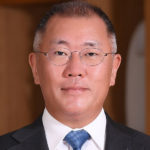WHO’s Chief Scientist Soumya Swaminathan on CNN warns vaccine efficiency still unclear

In a wide-ranging interview with CNN’s Becky Anderson, Soumya Swaminathan, Chief Scientist at the World Health Organisation, WHO, spoke on how to mitigate the continuing spread of Covid-19. Also, whether you can catch the virus twice. Swaminathan reaffirmed that a vaccine for Covid-19 is still not a certainty and stressed it will still take several months to understand its efficiency. As Europe continues to experience a second wave of the virus, Swaminathan also told Anderson that lockdowns should only be considered a temporary measure.
Covid-19 vaccine timeline
We can be optimistic, but there’s still an if. We have a large number of vaccines in development, so we are already hopeful that a couple of them, or several of them, will actually turn out to be safe and effective. We still haven’t seen the results of any phase three clinical trials. These are the trials that tell us about both safety and about efficacy, or the protective efficacy, of a vaccine. We’re likely to start seeing results late 2020, early 2021.
On herd immunity
Herd immunity or population immunity is generally referred to in the context of a vaccine. There’s never been a disease, an infectious disease, for which herd immunity or population immunity has just come about through natural infections. It’s never happened before.
How many infected
What we do know is that about 38 million people have been detected to have been infected or diagnosed to have been infected. But what we also know is that in actual reality a far higher number. We know there have been over a million recorded deaths due to Covid-19, but we also know in many countries around the world there have been an excess of deaths during the last nine months which have not been attributed to Covid. The number of deaths is also going to be higher than what we’ve been able to count.
Effectiveness of lockdowns
I think what we have to look at a comprehensive set of interventions and this is what the WHO has said from the beginning: Do it all, no one thing is going to work. A lockdown is a temporary measure. It is done when things are out of control, and it’s done to buy time for health systems to put in place the systems. But what we do know is we know where it spreads now, we know the three C’s, the crowded settings, the closed poorly ventilated settings and the close contact. We have to avoid these amplifying events, which occur in these indoor settings.
Source: CNN Connect.





